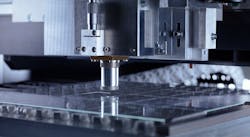TRUMPF (Ditzingen, Germany) has completed the renaming and merger of its wholly-owned fiber laser manufacturing subsidiary SPI Lasers (Southampton, UK) into the TRUMPF group and under the TRUMPF brand. Effective November 28, 2020, SPI Lasers UK Ltd. will now operate under the name TRUMPF Laser UK Ltd. The companies SPI USA and SPI Korea have been merged with the local companies TRUMPF USA and TRUMPF Korea, respectively, effective November 1 and December 1, 2020. TRUMPF previously merged the SPI subsidiary in China with TRUMPF China back in April 2020. Since July 1, 2020, products from the former SPI Lasers have been available through TRUMPF sales channels.
As a result of the name change and merger, the former SPI Lasers is now working more closely with TRUMPF Laser- und Systemtechnik GmbH, also a wholly owned subsidiary of the TRUMPF Group. The two companies are pooling their laser technology expertise for industrial applications in both disk laser and fiber laser technology.
SPI Lasers UK Ltd. has been a wholly owned subsidiary of the TRUMPF Group since 2008; at the time, SPI Lasers produced both medium-power solid-state lasers for cutting and welding and lower-power (10 and 20 W) fiber lasers used for micromachining and making, as well as medical applications. In 2015, SPI Lasers sold its CO2 laser business to Suzhou Tianhong Laser (Suzhou, China), and in 2017, SPI Lasers sold off lamp-pumped Nd:YAG laser business to TJS (Denville, NJ) to concentrate on its fiber lasers. SPI Lasers now produces nanosecond pulsed fiber lasers to 250 W average power and CW fiber lasers with powers up to 10 kW.TRUMPF says that it has now fully integrated the former SPI Lasers' fiber lasers into its global sales and service channels. An overview of the complete TRUMPF fiber laser product portfolio can be found at https://www.trumpf.com/en_GB/products/laser/short-and-ultrashort-pulse-lasers.
About the Author
John Wallace
Senior Technical Editor (1998-2022)
John Wallace was with Laser Focus World for nearly 25 years, retiring in late June 2022. He obtained a bachelor's degree in mechanical engineering and physics at Rutgers University and a master's in optical engineering at the University of Rochester. Before becoming an editor, John worked as an engineer at RCA, Exxon, Eastman Kodak, and GCA Corporation.

